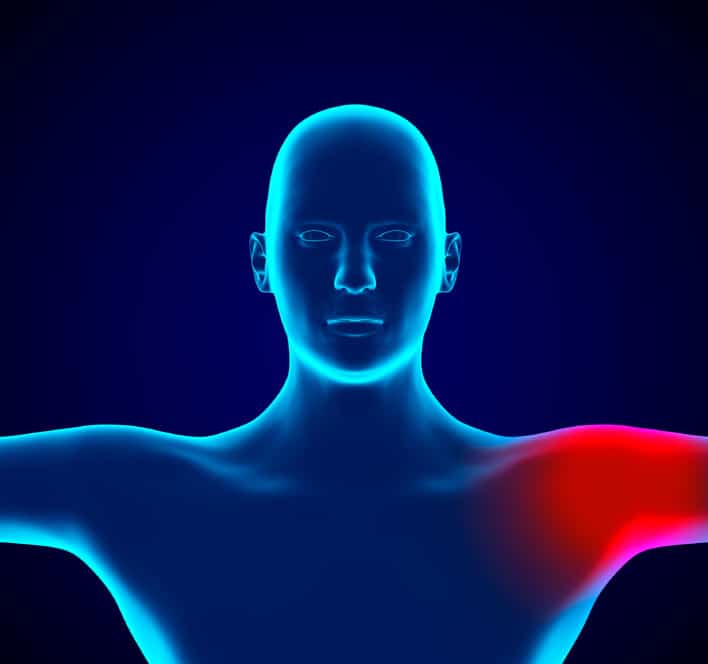A bursa is a fibrous sac filled with lubricating fluid that serves as a cushion between bones and soft tissue, such as tendons and muscles. The primary purpose of a bursa is to reduce friction and improve the efficiency of movement. However, sometimes, the bursae wear down and become inflamed, leading to a condition called bursitis.
In severe cases, it is possible that a patient suffering from bursitis will need a bursectomy, which is a surgical procedure to remove the inflamed bursa. At NJ Spine & Orthopedic, our experienced orthopedic surgeons specialize in bursectomy procedures to reduce the pain and discomfort associated with bursitis. Our Concierge Team can also help you plan every aspect of your appointment, including gathering medical records, to take some of the stress off your shoulders.
What Are the Causes and Symptoms For Bursitis?
Bursitis can occur in any joint in the body, but it is most likely to affect the shoulder, elbow, hip, or knee. It can also affect the heel which is known as Achilles tendon bursitis (retrocalcaneal bursitis) and the toe area (metatarsal bursitis).
Common causes of bursitis include repetitive motions, continued stress on the area, recent trauma, or infections. It is a common condition in people who perform repetitive tasks with their arms and legs, such as playing sports, gardening, or painting.
Some of the most common symptoms of bursitis include pain and tenderness around the affected area, swelling, and difficulty moving the joint. In some cases, the affected area may become red and warm to the touch if an infection is present.
What Is the Difference Between Bursitis and Arthritis?
Bursitis is an inflammation of the bursae, which are small fluid-filled sacs that cushion and reduce friction between muscles, bones, and tendons. Arthritis is a general term for a group of over 100 diseases that cause inflammation in joints, cartilage, and bones. While both bursitis and arthritis cause joint pain and inflammation, they are two distinct conditions that affect different parts of the anatomy and require different treatments.
Another key difference is the damage caused by arthritis is permanent and non-reversible. Bursitis, on the other hand, is often temporary. When bursitis becomes a chronic condition, however, it can cause lasting damage such as hardening of the bursa, requiring further treatment.
What Are the Common Treatments of Bursitis?
Treatment options can range from rest to medication to surgery, depending on the severity of the condition. Non-surgical treatments include rest, wearing a brace, antibiotics (if an infection is present), and anti-inflammatory medications. Physical therapy is also recommended to help strengthen the muscles around the joint and improve the range of motion.
If the condition does not respond to non-surgical treatment, your doctor may recommend a bursectomy. This is especially true in cases of chronic bursitis where an infection commonly reoccurs.
What Is the Bursectomy Procedure Process?
A bursectomy is a minimally-invasive surgical procedure to remove the inflamed bursa. It has a high success rate in reducing pain and discomfort caused by bursitis. During the surgery, the doctor will determine whether the sac can be drained or if it should be reduced or removed entirely.
If drainage is possible, the doctor will insert a small tube that will allow the fluid to drain over the course of several days. You will likely be prescribed a course of antibiotics during this time to prevent a new or secondary infection.
However, if the bursa needs to be reduced or removed, the doctor will make a small incision in the area and carefully remove the inflamed bursa. In some cases, only portions of the bursa need to be removed, leaving small portions intact which can possibly regrow to their full original size. When it is done, the doctor will insert a few sutures to close the incision and a bandage will be applied.
Risks, Complications, and Recovery Times After a Bursectomy
While relatively rare thanks to advancements in technology, there are still some risks and complications associated with the procedure. These include infection, pain, and stiffness in the area, and in rare cases, damage to nearby tissues and structures.
The recovery time after a bursectomy can vary, but most patients are able to return to normal activities within four to six weeks. During this time, it is important to follow any instructions given by your doctor, including taking pain medications, applying ice to reduce swelling, and avoiding any strenuous activities. Ignoring the advice of your doctor to avoid repetitive motions and stress on the area can lead to an increased risk of recurrence.
Get Long-Term Relief from NJ Spine & Orthopedic
Bursitis is a common source of joint pain, but it doesn’t have to be a permanent condition. At NJ Spine & Orthopedic, our experienced orthopedic surgeons can perform a bursectomy to provide patients with long-term relief from bursitis. We offer the latest in minimally-invasive techniques to provide our patients with the best possible care.
Whether you’re in need of a bursectomy for bursitis or you’re looking for relief from other types of joint pain, our team is here to help. Don’t suffer longer than you need to. Use our online form or call us at (866) 553-0612 today to schedule a consultation and learn more about the bursectomy procedure.

